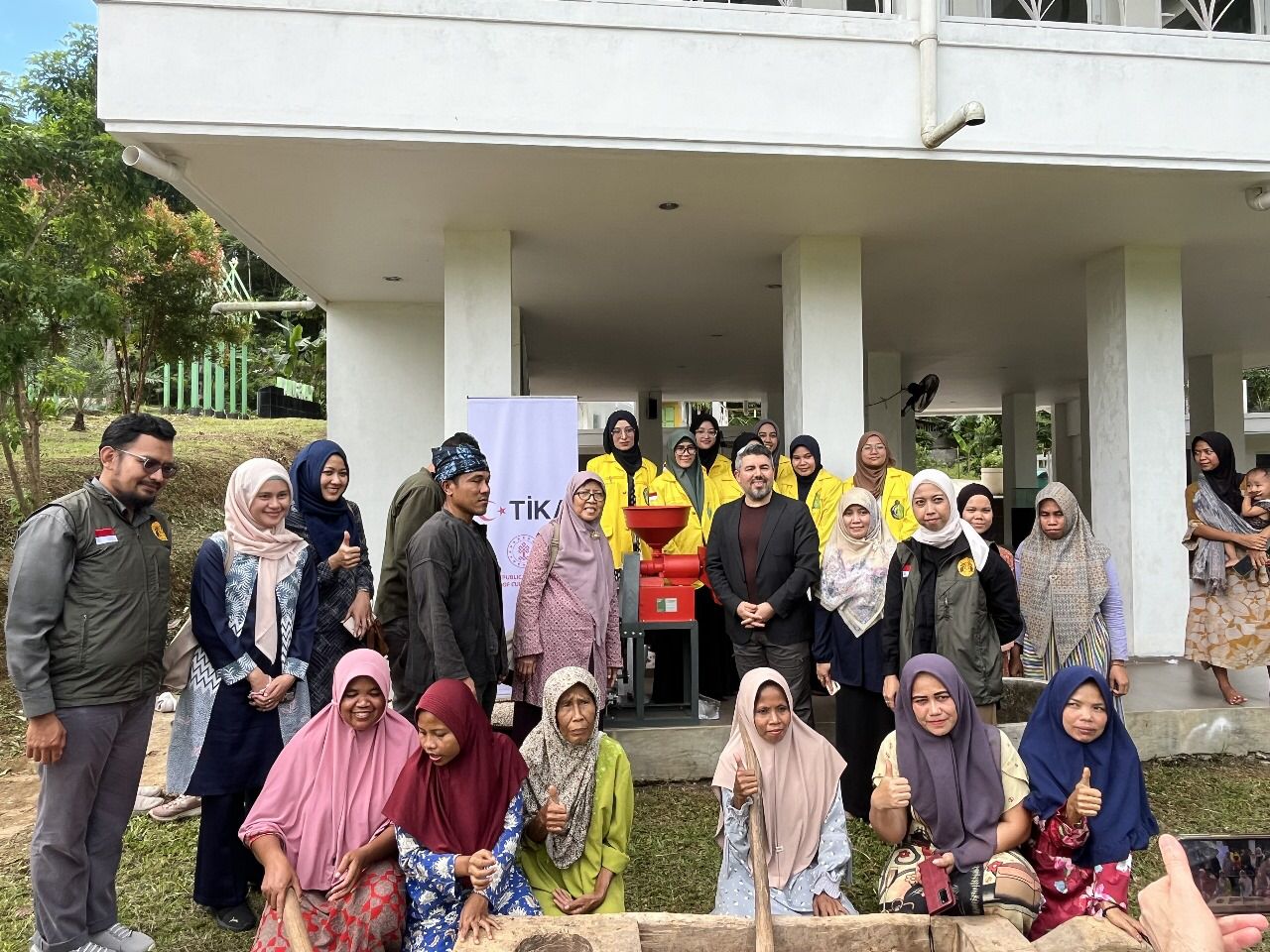The Rector of Universitas Indonesia (UI), Prof. Dr. Ir. Heri Hermansyah, S.T., M.Eng., IPU, inaugurated Prof. Dr. Drs. Supriatna, M.T., Geog.PU. and Prof. Dr. Tito Latif Indra, S.Si., M.Si. as Permanent Professors of the Faculty of Mathematics and Natural Sciences (FMIPA) UI, on Wednesday, January 15, at Balai Sidang, UI Depok Campus. Prof. Supriatna was inaugurated as Professor of Spatial Modeling of Land Use and is the 7th professor inaugurated this year out of a total of 481 UI professors.
At his inauguration, Prof. Supriatna delivered a speech on “Pemodelan Spasial untuk Pembangunan Berkelanjutan” (Spatial Modeling for Sustainable Development), which reviewed the role of spatial modeling to support development in all fields. According to him, Geography, especially spatial modeling, can provide research results that are holistic, multi-, and interdisciplinary, so this science is very relevant to the progress of the times.
“Geography is multidisciplinary in nature, encompassing various disciplines, both natural sciences and social sciences, so that geography is the mother of all sciences. Geography as a science that studies spatiality plays a major role in the transdisciplinary development process for sustainable development,” said Prof. Supriatna.
In studying space, spatial models are an important tool for exploring the driving factors of land use, supporting urban planning and policy making, and assessing ecological impacts. Spatial modeling is one technique that is often applied to study land cover dynamics. Unfortunately, although it has been widely applied, the use of spatial modeling has not been maximized.
According to Prof. Supriatna, increasing urbanization and population growth have made changes in land cover and land use increasingly significant. This causes environmental problems, such as a lack of agricultural land and loss of biodiversity that affect sustainable development. For this reason, monitoring land cover changes is important to reveal the dynamics of global land change, climate change, land systems, and ecosystem sustainability, as well as to predict the future.
Spatial modeling, especially Spatial Dynamics, is an important tool in predicting change and helping more effective spatial planning. By combining Geographic Information Systems (GIS) and dynamic systems, this model provides innovative solutions to maintain the balance between human needs and environmental sustainability. Several models have even been developed that include salinity algorithms for estuary waters, modeling of shoreline changes, and detection of natural resources such as hydrocarbons and geothermal.
His research includes land-carrying capacity models that assess the balance between population growth, regional development, and the availability of natural resources. His research includes shoreline changes, marine resource potential, and the impact of climate change. One of his innovative contributions is the Cimandiri Algorithm which is used to determine estuary boundaries using salinity data from satellite imagery.
Currently, Prof. Supriatna is leading research to map solar energy potential using UAVs (drones) and model plant productivity through spatial analysis. In the future, spatial modeling research will focus on renewable energy, plant health, and sustainable land use. Drone technology and satellite sensors are further expanding the scope of this research, strengthening the role of geography as a science that contributes directly to sustainable development.
“With all its potential, spatial modeling is ready to answer the challenges of the times, creating data-based solutions for harmonious development between humans and nature. Research in this field will continue to drive innovation for a better future,” he said.
Prof. Supriatna’s research on spatial modeling shows his expertise in the field. His latest research results were published in the Scopus Q2 indexed International Journal on December 16, 2024, titled “Spatial Phenology and Rice Productivity Estimation Based on Vegetation Indices in Wargasetra Village Using Planet Fusion Satellite Imagery.” Previously, he was recorded as producing 30 international articles in reputable journals; 30 national articles in Sinta indexed journals; 110 indexed international proceedings articles; 39 international, national, and local research grants (UI); 14 Community Service grants; 12 Teaching and Popular Books; 15 Intellectual Property Rights and 1 patent; and 5 journals as Bestari Partners/Reviewers/Editors.
Before being inaugurated as a professor, he completed his Bachelor of Science, Geography Department, FMIPA UI in 1992; Master of Engineering, Geodesy Department, Faculty of Civil Engineering and Planning, Institut Teknologi Bandung in 1998; and Doctor of Environmental Science, Environmental Science Study Program, UI in 2016. Currently, he serves as Head of the Geography Department, FMIPA UI and Head of the Center for Applied Geography Studies (PPGT) of the Special Work Unit of the Applied Science Institute, FMIPA UI.



